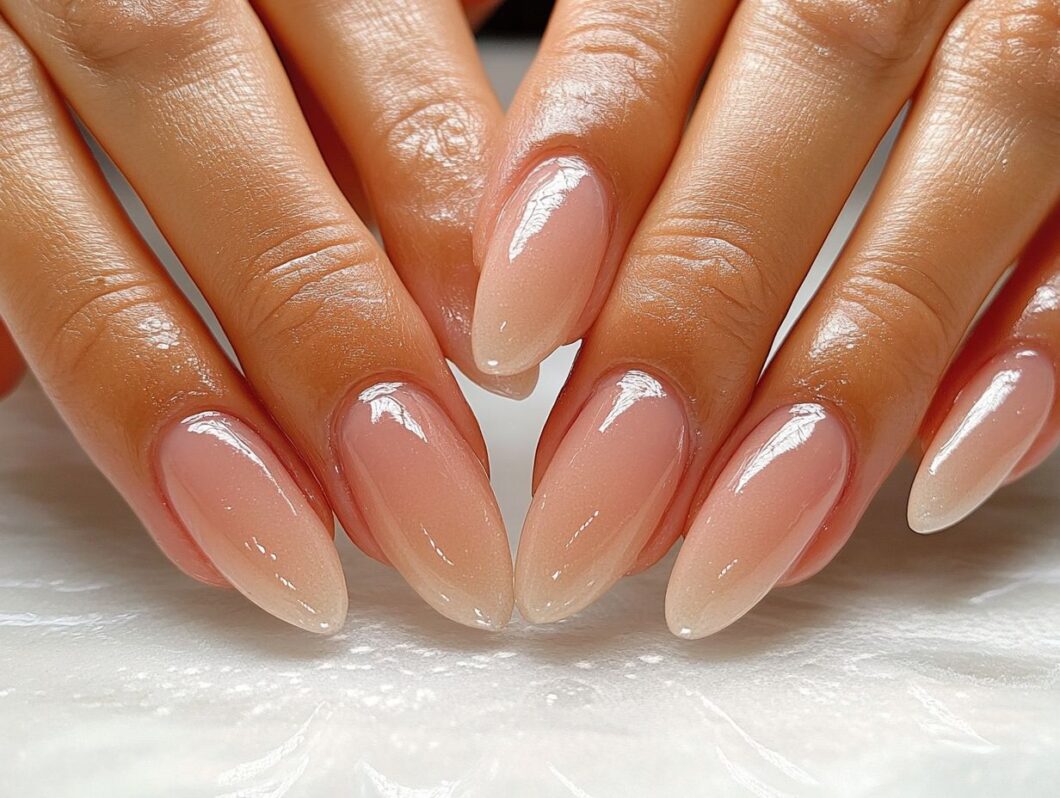Acrylic nails have long been a popular choice for individuals seeking a glamorous look, but it is essential for me to understand their impact on my natural nails in order to make informed decisions.
This article delves into the differences between acrylics and natural nails, highlighting their compositions and effects. It addresses potential risks, including damage and allergic reactions, and provides a step-by-step guide for transitioning back to natural nails.
I will also learn how to care for my nails post-removal, explore the benefits of embracing natural beauty, and consider alternative treatments.
I invite you to join me in uncovering the path to healthier, more beautiful nails.
Key Takeaways:
Understanding the Differences Between Acrylics and Natural Nails
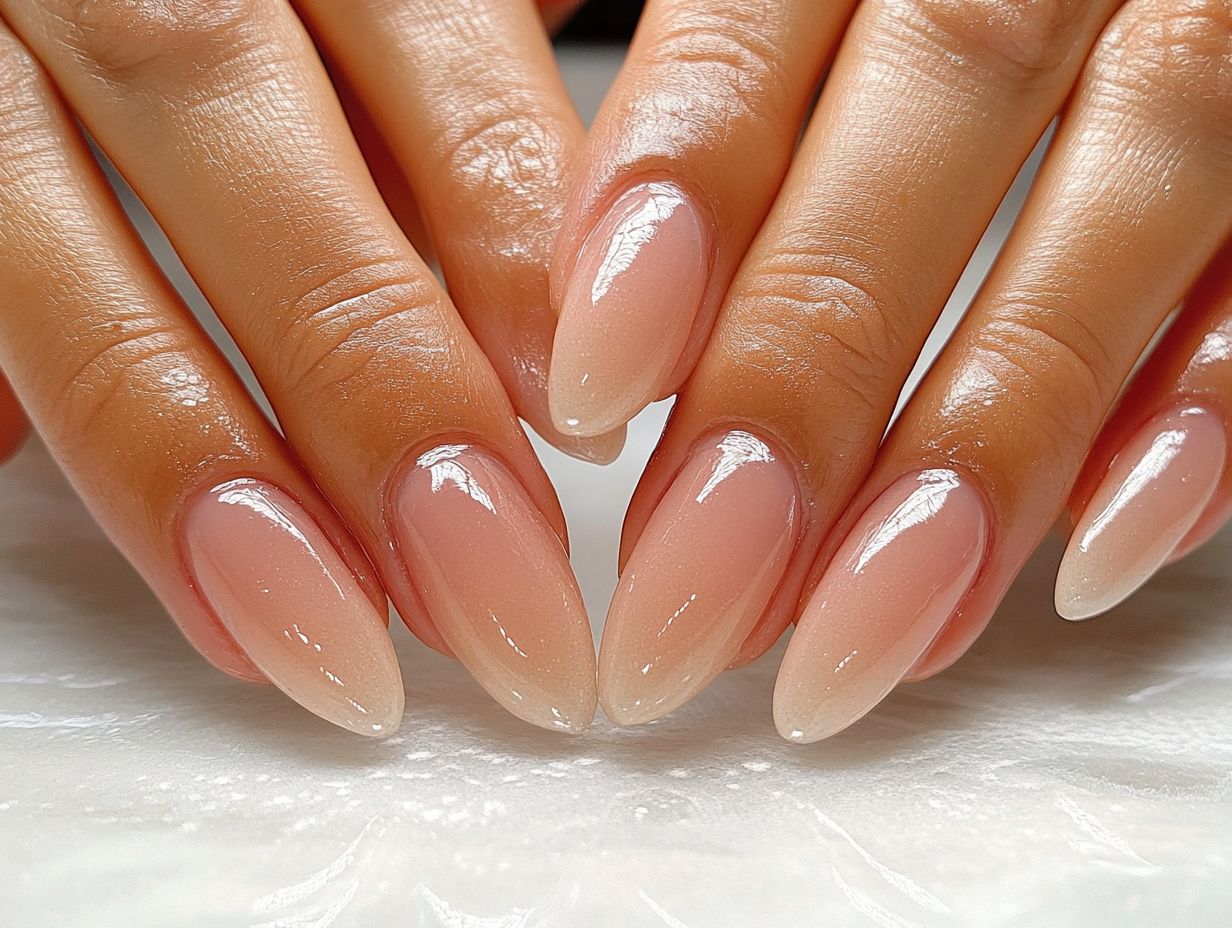
Understanding the differences between acrylic nails and natural nails is essential for anyone interested in nail care, particularly if one is considering acrylic application or seeking a more natural aesthetic.
“`html
I recognize that acrylic nails are often favored for their durability and versatility, as they involve the application of a synthetic polymer that can significantly enhance the length and shape of natural nails. For those considering a change, learn more about how to transition from acrylics to natural nails safely.
“`
In contrast, natural nails, composed of keratin, can be maintained to achieve a healthy and elegant appearance without the need for artificial enhancements.
This guide will explore the composition and effects of both types of nails to assist in making an informed decision.
Composition and Effects on Nails
The composition of acrylic nails is notably different from that of natural nails, which has a direct impact on the health and longevity of my nail beds.
Acrylic nails are generally created from a combination of liquid acrylic and powder, resulting in a hard protective layer over the natural nail. While this construction can produce a beautifully polished look, it may also pose risks of potential damage and weakening to the underlying nail if not properly maintained.
In contrast, natural nails are composed of keratin, benefiting from their organic structure that supports healthy growth and flexibility. Understanding these distinctions is essential for anyone who prioritizes nail care, as healthy nails—regardless of whether they are acrylic or natural—require regular attention, nourishment, and appropriate treatments to ensure they remain in optimal condition.
Potential Risks of Acrylic Nails
While I appreciate the stunning aesthetic that acrylic nails provide, I am fully aware of the potential risks involved, especially regarding nail removal and the possibility of allergic reactions.
The application and removal of these synthetic enhancements often necessitate the use of strong adhesives and chemical solutions, which can cause damage to natural nail beds if not executed properly.
Furthermore, wearing acrylics for extended periods may weaken nail growth and overall condition, prompting serious considerations regarding nail health and the efficacy of the nail hardeners utilized during the application process.
Possible Damages and Allergic Reactions
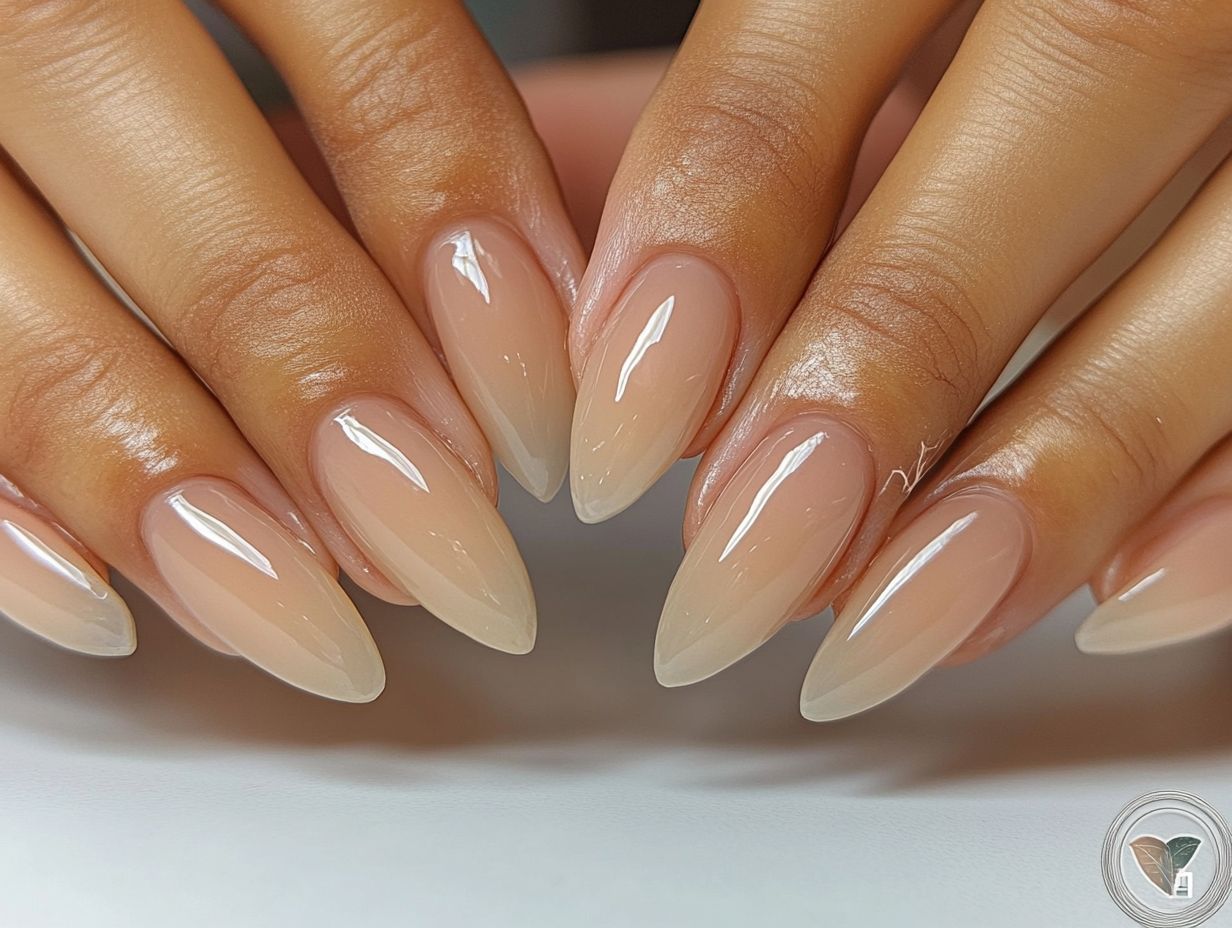
There are several potential damages associated with acrylic nails, including allergic reactions to the materials used and physical damage to the natural nail beds upon removal. For more information on how to manage this transition safely, check out this guide on how to transition from acrylics to natural nails safely.
Allergic reactions can present themselves in various forms, such as redness, itching, swelling, and even blistering around the nail area. The primary offenders are often the chemicals contained in the acrylic, particularly methacrylate compounds, to which some individuals may be sensitive.
Along with these reactions, improper removal techniques can cause significant physical harm to the nail beds, resulting in thinning, tearing, or even infections if not handled with care.
To minimize such damages, I highly recommend the following precautions:
- Seek professional application and removal services.
- Use non-acetone nail polish removers.
- Ensure that nails receive proper care and time to recover between sets. For more guidance, check out How to Transition from Acrylics to Natural Nails Safely.
By taking these steps, individuals can enjoy the aesthetic appeal of acrylics while maintaining the health of their nails.
Transitioning from Acrylics to Natural Nails
Transitioning from acrylics to natural nails is a delicate process that necessitates proper nail removal and care to support healthy nail growth and restoration.
I understand the importance of approaching this transition with patience and a clear understanding of the necessary steps. This includes carefully soaking the nails to dissolve the acrylics and subsequently applying nourishing cuticle oil to promote hydration and recovery.
Though the removal process may appear daunting, using the right techniques and products—such as Rejuvacote and quality cuticle conditioners—ensures that my natural nails can regain their strength and beauty effectively.
Step-by-Step Guide
To effectively transition from acrylics to natural nails, I follow a step-by-step guide that ensures a smoother nail removal process while promoting healthy nails.
The process begins with soaking my nails in an acetone solution, which is essential for gently breaking down the acrylic material. I make sure not to rush this step, as allowing sufficient exposure to the acetone makes the actual removal easier and less damaging.
After soaking, I recommend using a cuticle pusher to carefully lift the softened acrylic away from the natural nail without applying too much force. This gentle approach minimizes the risk of tearing or damaging the underlying nail.
Once the acrylics are removed, I apply cuticle oil to nourish and hydrate both my nails and cuticles, which is critical for recovery and maintaining optimal nail health.
Caring for Natural Nails After Removal of Acrylics
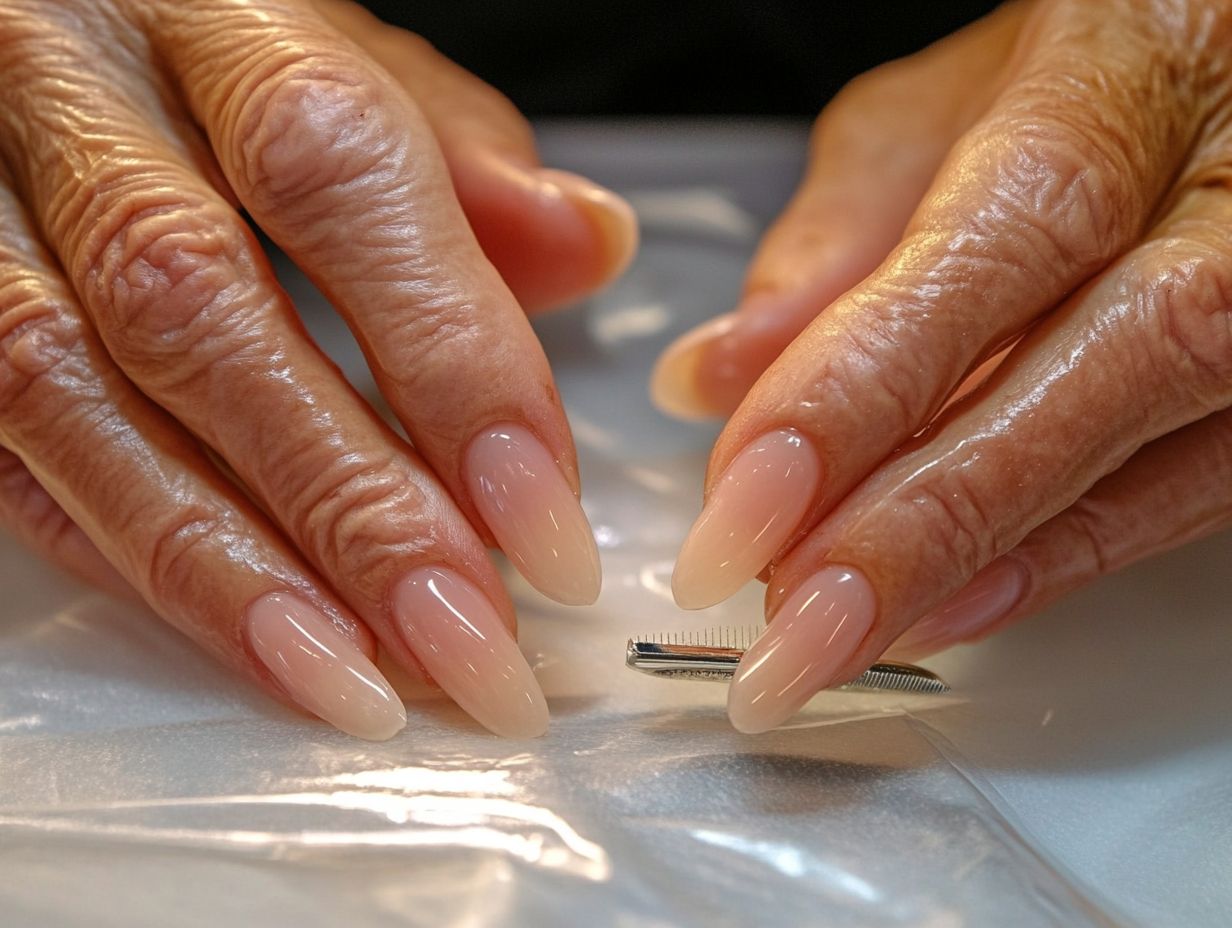
Caring for my natural nails after acrylic removal is crucial for promoting their health and supporting optimal growth. Following the acrylic removal process, my nails often need additional attention to restore their strength and hydration.
I find that incorporating effective manicure practices, such as regularly applying cuticle oil, keeping my nails well-hydrated, and adhering to a consistent nail care routine, makes a significant difference in their recovery.
I also utilize products like Vitamin E oil and aloe vera, which can be particularly beneficial during this transitional phase.
Proper Hygiene and Maintenance
Maintaining proper hygiene and routine nail care is essential for ensuring that my natural nails remain strong and hydrated after removing acrylics.
To achieve this, I make it a priority to regularly clean my nails and cuticles, as dirt and debris can accumulate over time, leading to potential infections or breakage.
Using cuticle oil is a critical part of this process, as it nourishes the skin around my nails, promoting healthy growth and preventing dryness.
Incorporating moisturizing practices, such as applying hand creams or specialized nail moisturizers, helps me retain moisture and elasticity, making my nails less prone to splitting or peeling.
By following these straightforward yet effective nail care tips, I ultimately contribute to the beauty and health of my nails, ensuring they are well-protected and nurtured.
Benefits of Natural Nails
I recognize that natural nails offer numerous benefits that significantly enhance overall nail health. With proper care, they have the potential to grow stronger and healthier over time.
Unlike acrylic nails, which can weaken the natural nail bed, adopting a natural nail care routine allows for the use of nourishing products such as cuticle oil and nail hardeners. These products promote hydration and support full nail growth.
Additionally, I appreciate the aesthetic versatility of natural nails, as they can be beautifully adorned with various nail art designs without the necessity of artificial enhancements.
Healthier Nails and Long-Term Effects
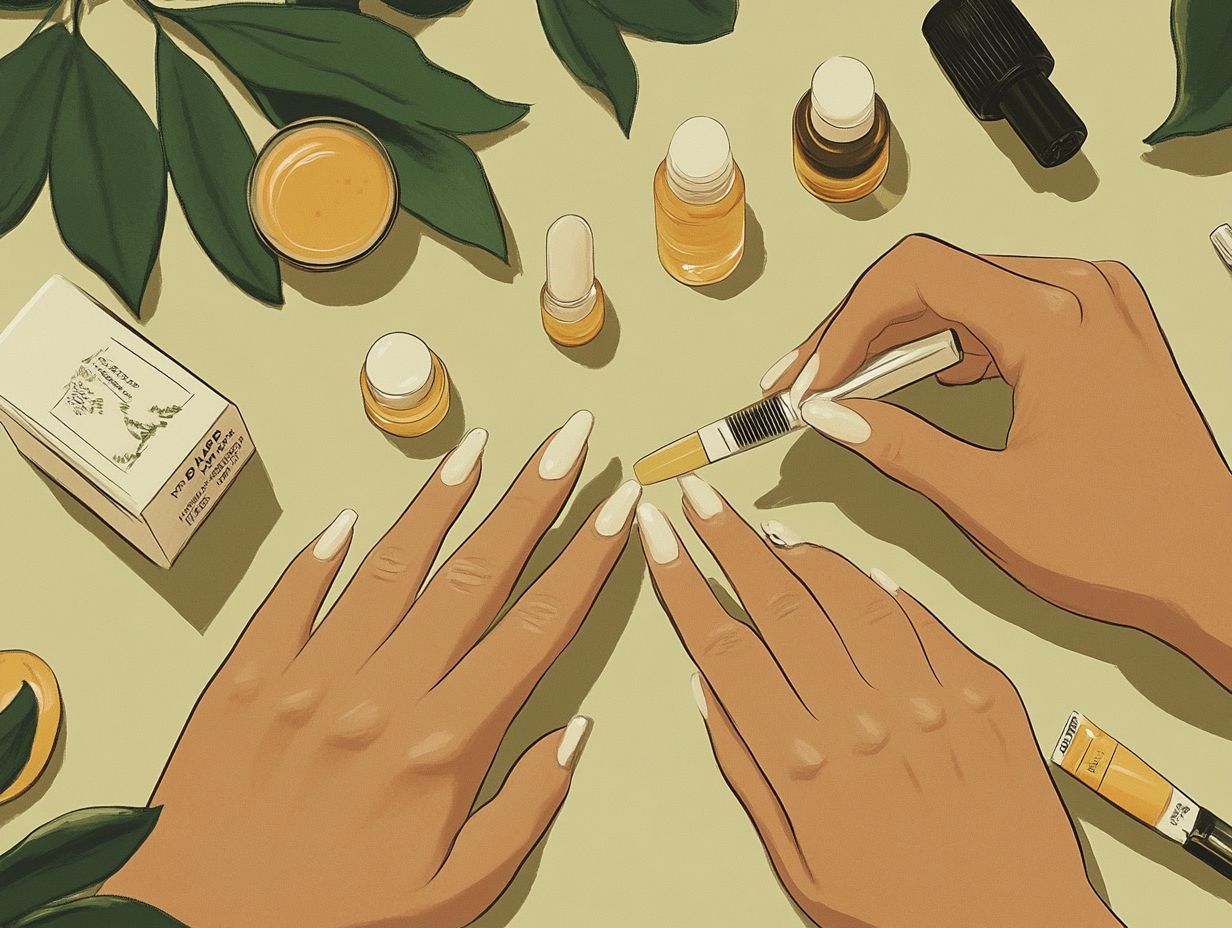
Healthier nails not only enhance my appearance but also provide long-term benefits that contribute to the overall health and functionality of my hands.
When I prioritize nail care, I often notice improved nail growth, resulting in stronger and more resilient nails. This consistent maintenance helps minimize the risk of breaks and splits, which can be both frustrating and painful.
By adopting regular nail care practices, such as moisturizing and applying protective coatings, I not only enhance the aesthetic aspect of my nails but also promote healthier cuticles and skin surrounding them.
Ultimately, the long-term effects include not only beautiful nails but also the prevention of infections and other complications, reflecting my commitment to overall well-being.
Alternatives to Acrylic Nails
For individuals seeking alternatives to acrylic nails, I find that several viable options are available. These include gel manicures, dip nails, and a variety of natural nail treatments designed to enhance the beauty of natural nails while prioritizing their health.
Exploring Other Nail Treatments
Exploring alternative nail treatments presents exciting options beyond acrylic nails, offering various benefits while promoting healthy nails and personalized nail art.
Among these treatments, gel manicures and dip nails are particularly noteworthy due to their popularity and impressive finish. Gel manicures involve the application of a specialized gel polish that is cured under UV light, resulting in a long-lasting, chip-resistant coating that maintains its shine for weeks.
In contrast, dip nails utilize a powder system that provides a durable option without requiring UV light, as the color is activated with a bonding solution.
While both methods are aesthetically pleasing, they can have different impacts on nail health. It is essential for individuals to understand the application processes and aftercare necessary to keep their nails strong and healthy, which contributes to an overall effective nail care routine.


